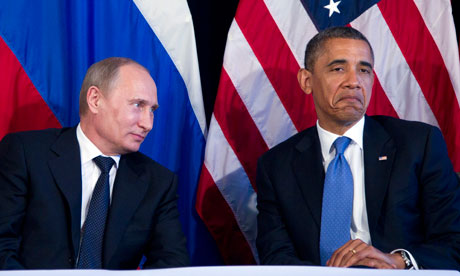The time for patience in Syria is over

AMERICA’S LONG paralysis in responding to the conflict in Syria is coming home to roost. Outside Aleppo, one of the oldest cities in the world, Syrian forces are massing for a possible assault on opposition fighters. President Bashar al-Assad has sent fixed-wing aircraft, helicopters and armored columns, threatening tens of thousands of terrified civilians.
When peaceful protest broke out in Syria last year, there was hope for a transition that would be turbulent but not violent. Mr. Assad chose instead to open fire on the protesters. President Obama called on Mr. Assad to leave office, a proper reaction to the brutality. But Mr. Obama has not backed his words with actions that might help them come true.
For a long while, the administration tried to give diplomacy a chance, saying it hoped to bring Russia, Syria’s ally, into the effort. It was never realistic to expect autocrat Vladimir Putin to assist in the overthrow of a fellow autocrat, and Russia predictably refused.
Another argument for remaining on the sidelines was that the opposition is fractured or ineffective and includes unknown or extremist elements. But if the administration is committed to Mr. Assad’s downfall, those weaknesses argue for more, not less, U.S. involvement, to get a better read on opposition forces and to encourage those less inclined toward sectarianism.
“We cannot stand idly by when a tyrant tells his people that there will be no mercy,” Mr. Obama saidwhen civilians in another Arab city — Libya’s Benghazi — were threatened as Aleppo’s are now. There are important distinctions between the conflict in Syria and the conflict in Libya, in which the United States, European allies and Arab states intervened. Mr. Assad’s forces are better armed. Syria has three times Libya’s population. There was stronger international support for action in Libya. But the broad challenge to the United States remains the same. Are we going to stand back and watch Aleppo turn into a shooting gallery?
No one is arguing for a Libyan-style intervention into Syria at this point. But the United States and its NATO allies could begin contingency planning for a no-fly zone, now that Mr. Assad is deploying aircraft against the opposition. Instead of providing only non-lethal support, such as medical supplies and communications gear, America could help supply weapons to the outgunned opposition fighters. It could work with Turkey and other allies to set up havens for them.
All of these moves contain risks. But those must be weighed against the danger of inaction — a long civil war that could spill across Syria’s borders.
Yes, this is an election season, and Americans are fatigued from a decade of war. But global leadership does not take a timeout, and sometimes it has to lead toward a consensus, not wait for one to form. “The United States has been, and will remain, the one indispensable nation in world affairs,” the president declared in a speech last week. Fine words.
No comments:
Post a Comment